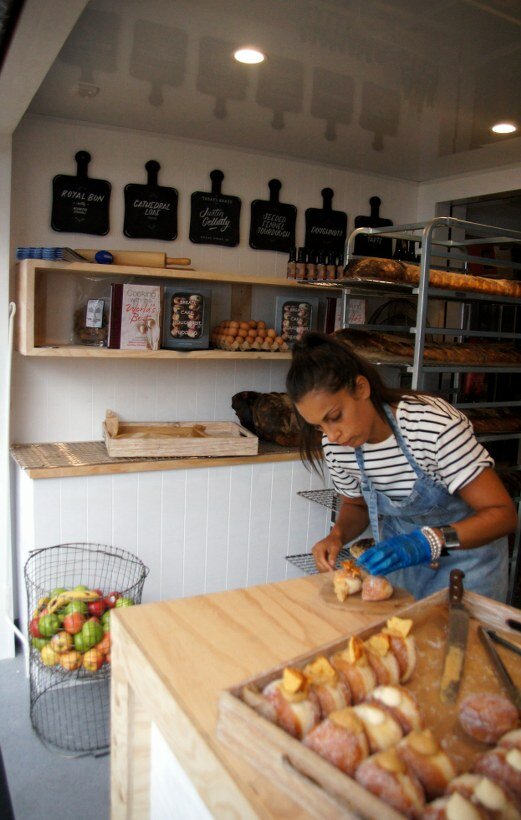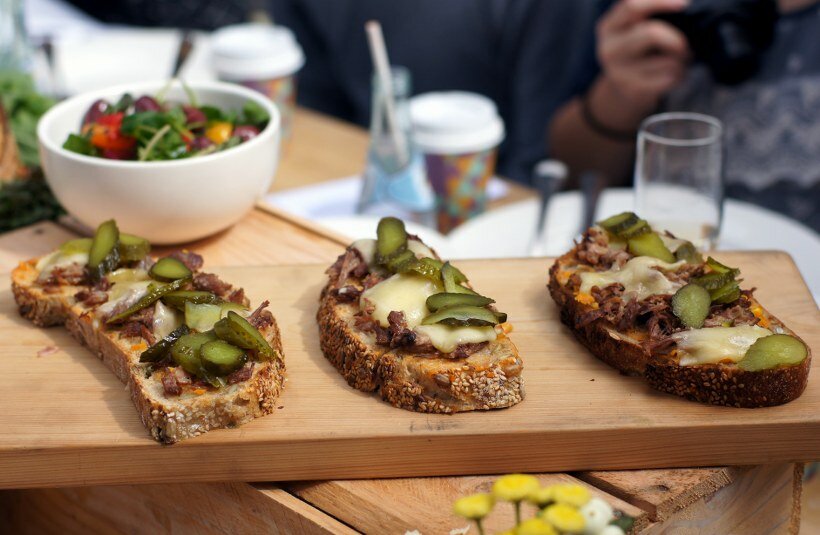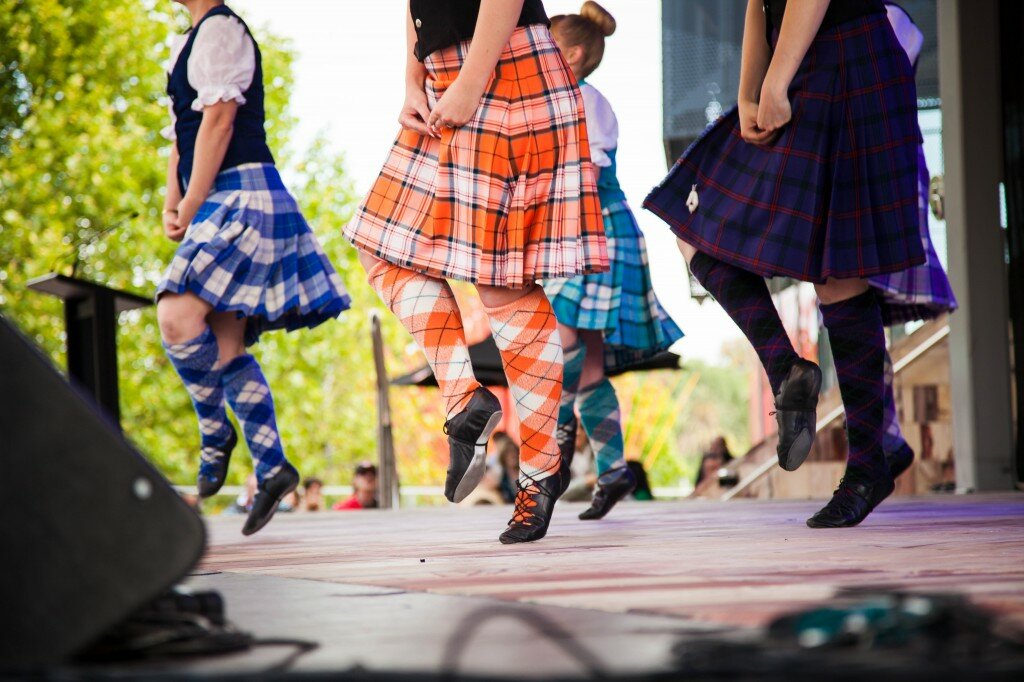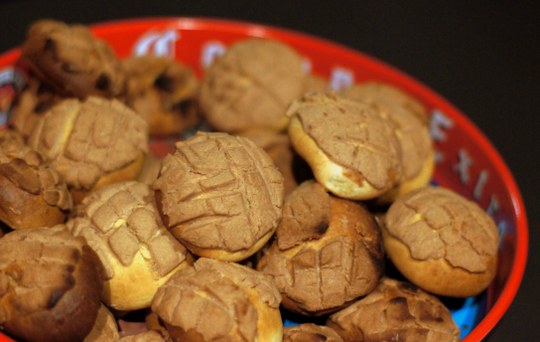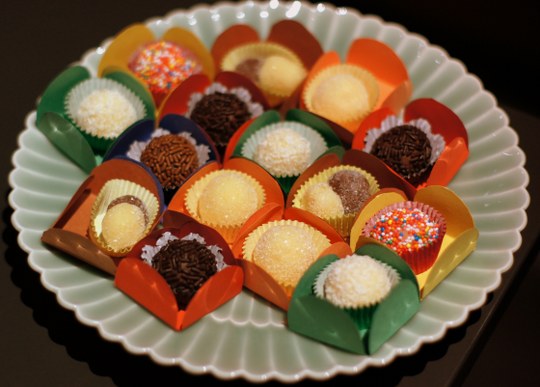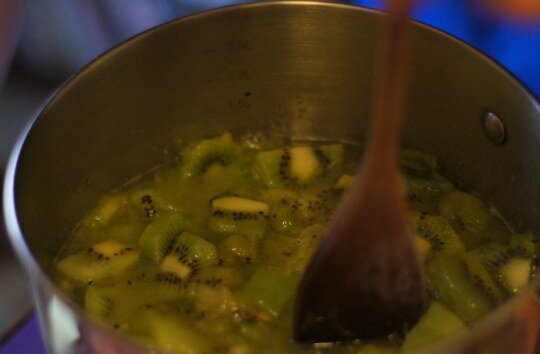
Who knew that there could be more to the humble spud than a white potato?
I love potatoes but I’m not knowledgeable about them – I just know that there are some potatoes which are better for roasting and some are better for mashing. So I was excited to receive an invitation from Georgie’s Harvest, a South Melbourne Market specialist potato, root vegetable and herb seller (her stall’s tagline is ‘All that’s good from the ground’), to attend a cooking class at the South Melbourne Market’s LG Cooking School to learn all about the potato.
Similar to the Electrolux Cooking School at Queen Victoria Market and the Essential Ingredient Cooking School, the South Melbourne Market’s LG Cooking School runs demonstration classes and hands-on Master Classes with Melbourne and Australia’s leading chefs. Compared to the other two cooking schools the South Melbourne Market cooking classes are held in a more intimate space, giving everyone a great view of the activities in the kitchen and with lots of interaction between participants and the teacher. And based on my experience with this class, you leave with a very, very full stomach.
This particular class was unique because it was run with chef Emma Mackay in conjunction with Georgie Dragwidge, owner of Georgie’s Harvest. While Emma prepped in the kitchen, Georgie gave a brief talk about the differences between a Dutch cream, Blue Zhar, Pink Eye, Viking, Nicola, Pink Fur Apple Potato, Desiree and the white potatoes you often find in the supermarket.
Basically, it’s all about flavour, colour and texture – there are different spuds for different purposes. For instance, Nicola potatoes are good all-rounders which are neither waxy or floury and are normally presented brushed to distinguish them from Dutch creams (which can sometimes be sold as Nicolas depending on supply). Dutch creams are similar in texture to Nicolas but are more yellow and sweeter in flavour. It’s often called the King or Queen of potatoes because it is so flavourful and versatile and is Georgie’s number 1 seller. Compare these potatoes to the Pink Fir Apple Potato, which are interchangeable with kiplers (the German variety of the same fingerling potato). It has a slight tinge of pink and is very waxy so it’s the kind of potato that you can boil dry and it won’t turn to mush.

Emma then started work at a cracking pace, demonstrating an ambitious number of recipes over two hours (and in fact, the class ran over time by an hour and we never really got to the skordalia recipe). Emma had two general tips about cooking potatoes 1. always boil potatoes whole with the skin on so they’re not waterlogged and you retain the flavour; and 2. as soon as finish prepping potatoes put them in cold water or the sugars will turn the potato brown. The longer you leave them in water the more they will lose flavour and starch, so she didn’t recommend peeling potatoes and leaving them to soak for hours on end.

We started off with a French-style seafood chowder using Pink Eye potatoes. This was a hearty, creamy soup with a base consisting of semi-mashed chunks of potato, fennel, white onions (apparently quite hard to find) and a variety of seafood. It was the perfect luxurious winter starter (or a meal in itself with lots of crusty bread) and the reason I eat in restaurants – so I don’t have to deal with all the pesky prepping myself!

For a more summery dish, Emma demonstrated her twist on the classic nicoise salad. A handful of Pink Fir Apple potatoes, boiled, peeled and confit, was presented with a colourful melange of blanched green beans, cherry tomatoes, anchovy fillets, boiled eggs, black olives and a white balsamic and olive oil dressing.

Instead of including the tuna in the salad they were featured as a side of tuna patties using Dutch cream potatoes. A really delicious way to dress up canned tuna if you’re not so keen on eating it straight from the can.

My favourite dish of the night was the gnocchi with napoli sauce. While most of the class was spent watching Emma in the kitchen, there was a fun activity when we each learnt to make gnocchi using Blue Zhar and Viking potatoes. Given that ten different pairs of hands made the gnocchi it was really interesting to compare the difference in the end result when the dough had been overworked or underworked as well as the difference in flavours and textures due to the different varieties of potato (Blue Zhar gets my vote for better gnocchi).

The gnocchi was paired with the simplest Napoli sauce ever – a bottle of good quality sugo, two cloves of crushed garlic, brown sugar, fresh basil and grated parmesan. An easy and warming meal and a recipe I’m going to try to replicate at home.
By now we were all groaning about being too full but still managed to sneak in a couple of mouthfuls of lamb moussaka using sliced and blanched Nicola potatoes and a bechamel infused with bay leaf, clove and shallots. Again, a filling dish perfect for a cold winter’s night, though quite time consuming to prepare.
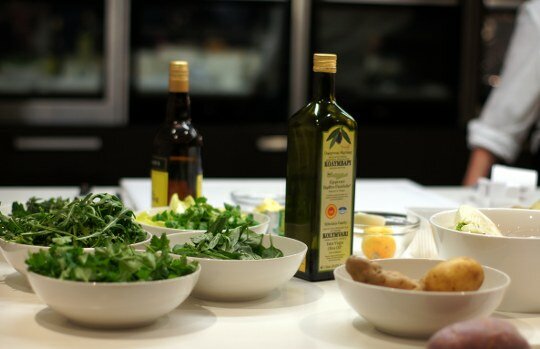
If all that food wasn’t enough, we each received a jar of Georgie’s grandmother’s skordalia to take home. This extremely garlicky concoction is made with Blue Zhar potatoes and Kolymvari Extra Virgin Olive Oil which Georgie considers the best olive oil you can get in Australia other than olive oil pressed from olives grown from your grandmother’s tree! The skordalia is perfect on toast.
I will definitely be returning to South Melbourne Market’s LG Cooking School – the class I attended is normally $85 and I think it’s great value for the enjoyment of the experience, the chefs tips and tricks, all the food you get to sample and then all the food you get to take home!
To find out more about potatoes and Georgie’s Harvest, check out this blog post.
Spud Heaven – Amazing Tasmanian Potatoes, LG Kitchen Cooking School, South Melbourne Market, Shop 90 Cecil St, South Melbourne






